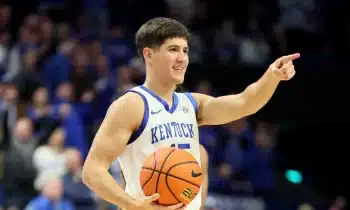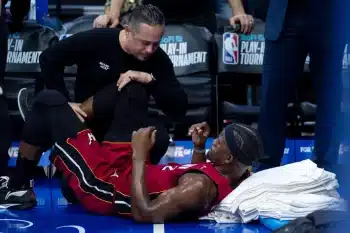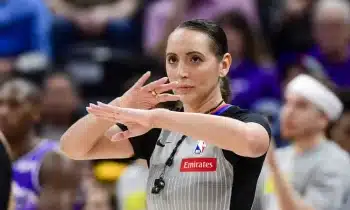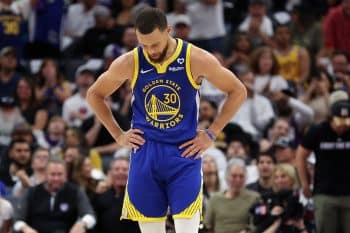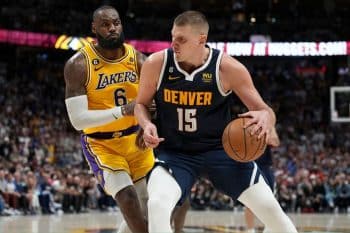NBA
NBA PM: Injuries Give Spurs Reserves Opportunity to Shine

The San Antonio Spurs are currently battling the Golden State Warriors in the Western Conference Finals. The Spurs led Game 1 by as many as 25 points and seemed poised to take a crucial game on Golden State’s home court. San Antonio was being led by Kawhi Leonard, who has continued to display MVP-worthy dominance on both sides of the floor in the playoffs. Unfortunately, Leonard went down after tweaking his ankle not once, but twice in the third quarter of Sunday’s game before sitting the remainder of the contest, which had a huge impact on the outcome of the game.
Defeating the Houston Rockets and making it to the Western Conference Finals was quite an accomplishment. In addition to the ankle sprain to Leonard (originally suffered against the Rockets), the Spurs had to overcome a ruptured quad tendon to starting point guard Tony Parker as well. Since Parker went down, the Spurs have relied on a couple of key reserves. The production from these reserves will be even more critical if Leonard is forced to miss significant time. Despite the disappointing loss in Game 1, the early returns have been positive so far for San Antonio. Let’s take a look:
Jonathan Simmons
With the injuries to both Parker and Leonard, the impact of Jonathon Simmons has been crucial for the Spurs. For casual fans of the NBA, Simmons is a relatively unknown player pulled from deep within the Spurs’ system. For many diehard Spurs fans and Texas natives, Simmons’ recent success is not such a surprise.
Simmons spent his college career playing for various schools in Texas, culminating with his one-year stay at the University of Houston. Despite going undrafted in the 2012 NBA Draft, Simmons tried out and earned a spot on the Austin Toros (the Spurs NBA Development League Team) in September 2013. In 2015, the Spurs called Simmons up from the D-League. In his two seasons with the Spurs, Simmons has averaged 16.6 minutes per game and 6.1 points per game. He even started two games his rookie season and eight games this season.
Getting to this point has not been easy for Simmons, who spoke in 2016 about tryouts, the NBA D-League and eventually making it to the NBA with the Spurs.
“It was a grind,” Simmons stated. “I enjoyed every bit of it, don’t take any part of it for granted. It definitely humbled me along the way. I’m enjoying this part even more.”
In the five games since Parker went down, Simmons has scored 13.2 points on 47.3 percent shooting, including 1.4 steals in 25.2 minutes per game. While increasing his playing time and production, Simmons posted a +8.2 net rating and 55.1 true shooting percentage. He is shooting well, defending effectively against both guards and forwards and is proving himself a more than capable backup for San Antonio. If Leonard is to miss any significant time, Simmons will need to be at his absolute best to help fill that massive void. San Antonio’s offense runs primarily through Leonard and he often shuts down the opponent’s best offensive player. Without Leonard, Simmons will be asked to help take on some of those responsibilities — an almost impossible task but one he seems ready to take on.
Patty Mills
While the rise of Simmons has been a welcome surprise to many, what guard Patty Mills has done has been much more expected. Once Parker went down, the Spurs immediately leaned on Mills, a career-backup to Parker, to take the starting role and produce.
Mills is now key to the Spurs’ success and played in all but 11 minutes of Sunday’s game. Although he did not shoot well, going 1-8 in the game, Mills came up with what could have been the play of the game.
The Spurs were down three with 33 seconds remaining when Mills rushed Warriors guard Klay Thompson and simply ripped the ball out of his hands. Thompson immediately fouled Mills putting him on the line where he hit both free throws and brought the Spurs within one. This lightning-quick turn of events gave the Spurs a shot to take back the lead in a game that had been slipping away since Leonard went down in the third quarter.
Unlike Simmons, a home-grown product of Texas, count Mills as one of the Spurs’ successful investments in overseas talent. The 55th pick of the 2009 NBA Draft out of Australia, Mills has continued a slower ascent within the organization. Now in his eighth season, Mills started a career-high eight games this season and had never started more than three before this season. Furthermore, Mills had never started a playoff game in his career until now. In the last two seasons, his playing time had peaked at 20.5 and 21.0 minutes per game, respectively.
With Mills as the replacement, the Spurs have divided ball handling responsibilities amongst a few players with a good amount of success. In the eight games leading up to and including Parker’s injury, the Spurs averaged 18 assists a game. Since the injury, the Spurs are averaging 24.2 assists per game. Additionally, since Parker’s injury, Mills is scoring 12.8 points, 4.2 assists, 1.4 steals in 33.2 minutes per game as the starter — a significant leap from the 21.7 minutes a game he averaged in the first round.
Head Coach Gregg Popovich (sort of) spoke about Mill’s production and value.
“I don’t want to talk too much about Patty Mills because the more I say good the more we’re gonna have to pay him [in free agency],” Popovich joked.
Mills has his limitations, but he has filled in admirably for the Spurs up this point.
Dejounte Murray
Point guard Dejounte Murray is still a few months shy of his 21st birthday. Yet, like the players above, Murray is already proof of the success of San Antonio’s player development program. Although his impact has been relatively minor this season, Murray actually started eight of the 38 games he has played in. Many teams would not trust a rookie to play any sort of significant minutes during the season, let alone start. Count this maneuver by the Spurs coaching staff as one that has paid off this postseason.
The time spent in the NBA D-League (15 games with the Austin Toros) helped to ensure him the opportunity to get more playing time, develop and have the chance to be productive and remain in game shape during the season. Murray showed a positive attitude earlier in the season when asked about a possible D-League assignment.
“If they want me to go down there and play, I don’t have a problem going there to play,” Murray stated.
Now, less than a year later, Murray finds himself thrust into the spotlight in the Western Conference Finals. Since Parker’s injury, Murray has played in four of five games and averaged 17.8 minutes per game. Although his contributions don’t match those of the players above, receiving any reliable contributions from a first-year player in this situation must be considered a net positive. In these games, Murray is averaging 6.8 points, 2.5 assists, one steal and has a plus-minus of 9.3.
And yet, to those who know him, Murray’s success is not such a surprise. Spurs veteran Manu Ginobili spoke highly of Murray and his future potential earlier in the season.
“[Murray] has talent,” Manu Ginobili stated. “He has ball skills. He has athleticism. When you have those few things, and then you listen and want to get better, then if you get all [the other)] things together, your career is on the way up. He has a very bright future. He knows that. We all know that.”

